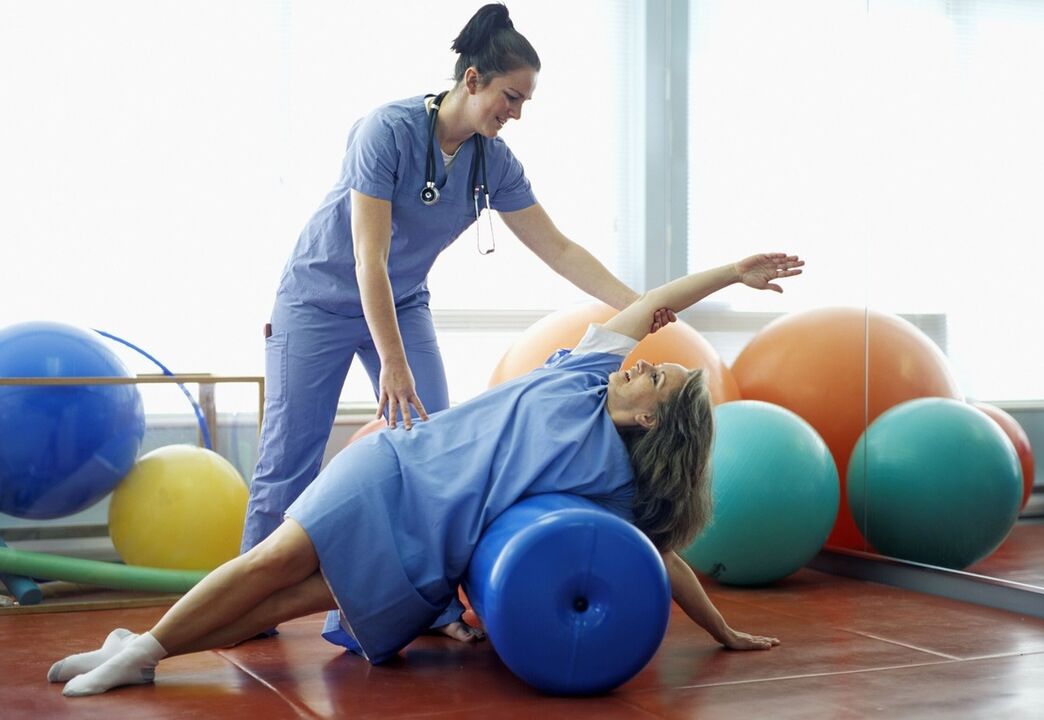
Osteoarthritis is a painful change and deformity of the joints. It occurs when the articular cartilage is irreparably damaged. With conservative treatment or surgery, the symptoms of joint wear can be significantly reduced.
Disease review
- The following joints are most commonly affected: knee, hip, shoulder, spine, fingers and toes, ankles;
- The most important signs: pain during exercise, pain at the beginning of training (at the beginning of physical activity), reduced mobility, joint deformity, periods of worsening: swelling, redness, persistent pain;
- Diagnosis: physical examination, X-rays, computed tomography (CT) or magnetic resonance imaging (MRI);
- Treatment: exercises, heat or cold procedures, painkillers, intra-articular injections (hyaluronic acid, chondroitin sulfate), in later stages - joint replacement (surgery);
- Attention: many arthrosis do not need to be treated for a long time, but physiotherapy and prevention of exacerbations should be carried out to a sufficient extent and, if necessary, the pain syndrome should be stopped.
Methods of treating osteoarthritis
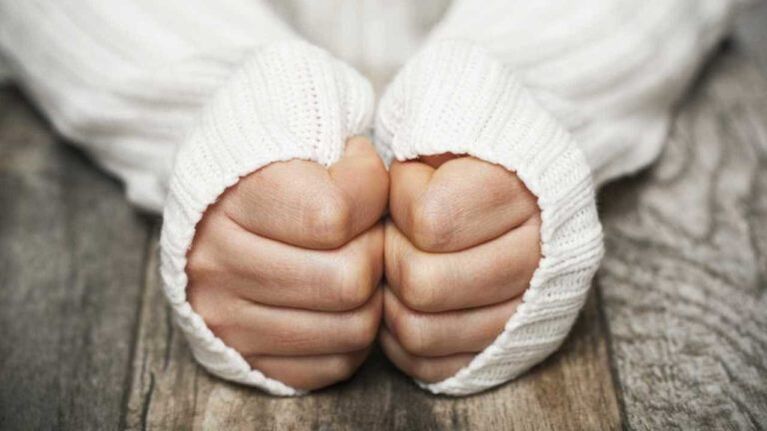
What helps with osteoarthritis or osteoarthritis? For most patients, this is a major issue. Answer: There is still no treatment for osteoarthritis that can repair damaged cartilage.
Treating osteoarthritis can only alleviate the symptoms of this condition. In addition, treatment should prevent long-term wear and tear of the joints.
Because the disease eventually leaves a mark on the worn joint, causing damage to the joint capsule, bones and muscles.
Treatment of osteoarthritis includes conservative and surgical procedures. The doctor will select the most appropriate methods for each patient. Among other things, it assesses which joints are affected, how severe the wear is, and how severe the symptoms are.
Conservative treatment
Conservative treatments for osteoarthritis are designed to relieve pain, fight inflammation and strengthen muscle strength and coordination. A huge role is attributed to physiotherapeutic procedures, which are carried out both during exacerbation and during the period of "calming" of symptoms.
Physiotherapy treatment
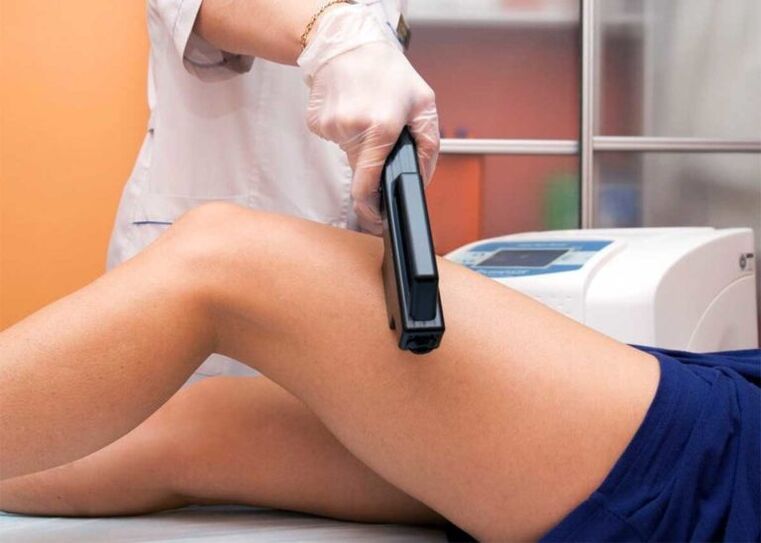
Different forms of physical therapy can alleviate the symptoms of osteoarthritis. This includes:
- physiotherapy;
- Manual therapy;
- Thermotherapy (not in the acute phase);
- Cryotherapy (in the acute phase);
- Doing sports that are good for the joints, such as Nordic walking, swimming and cycling;
- Water therapy and baths;
- Electrotherapy;
- Ultrasound therapy;
- Orthopedic appliances.
To treat chronic osteoarthritis pain, you can use heat from heating treatments, packaging, baths, or infrared light. On the other hand, severe swelling and discomfort are alleviated by cold treatments or compresses.
Physical therapy is also useful in treating osteoarthritis because it strengthens muscles. Massage is also recommended: it relieves tension and improves blood circulation.
Movements in the joints during exercise
Regular exercise keeps your joints flexible. Therefore, people with osteoarthritis should include sports and exercise in their daily lives. Swimming is a good example. It trains the joints without straining them too much. For the same reason, walking on the plains and cycling are recommended.
Sport can not only prevent, but also slow down osteoarthritis and reduce symptoms.
Less suitable for osteoarthritis are sports with sudden, significant joint stress, extreme movements or a high risk of injury. These include, for example, tennis, skating, football, handball, karate and boxing.
Joint fixation
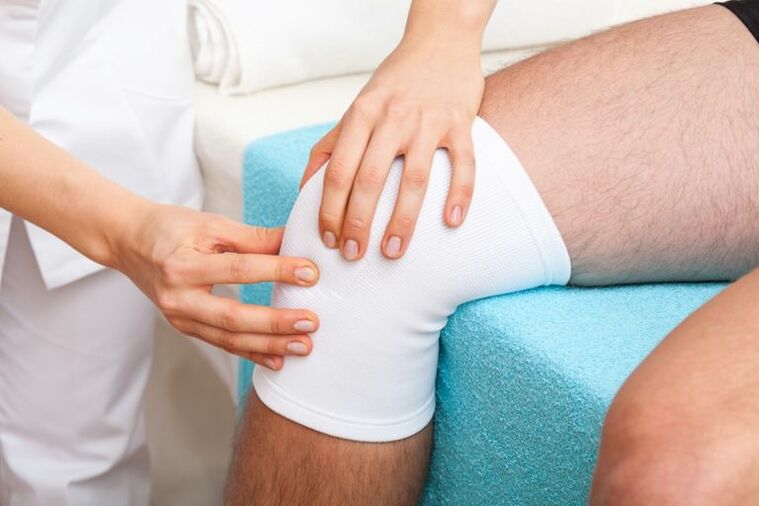
Bandages, elastic bandages, soft soles and crutches facilitate the functioning of the joints. Orthoses help in the same way. These are special devices to support the joints. They prevent painful movements. However, orthoses are not very flexible and only need to be worn briefly to prevent joint stiffness.
If a person is overweight, try to lose weight. That way, the joints will carry less stress. Regular exercise and a healthy diet help in weight loss.
Medicines to treat pain and inflammation
Painful joints with osteoarthritis can be rubbed with ointments, creams or gels from a pharmacy to relieve pain.
Local anesthetics are used to relieve pain: they are injected into the joint or around the affected area.
Osteoarthritis (or arthrosis) is usually a non-inflammatory process. However, the inflammatory process often joins the tissue affected by osteoarthritis. Then they talk about osteoarthritis or the activation of arthritis.
For treatment, the doctor often prescribes nonsteroidal anti-inflammatory drugs (NSAIDs). Sometimes glucocorticoids are also injected into the joint against inflammation.
Some patients receive injections of hyaluronic acid or chondroitin sulfate inside the joint for osteoarthritis. These are glycosaminoglycans and natural components of synovial fluid. By injecting hyaluronic acid directly into the affected joint, its mobility is restored.
Operation
Surgery can correct problems in patients with osteoarthritis and stabilize the joints. It also relieves pain and prevents inflammation. In some cases, the damaged cartilage is replaced during the operation. Patients with osteoarthritis may move better after surgery.
Joint rinsing and treatment
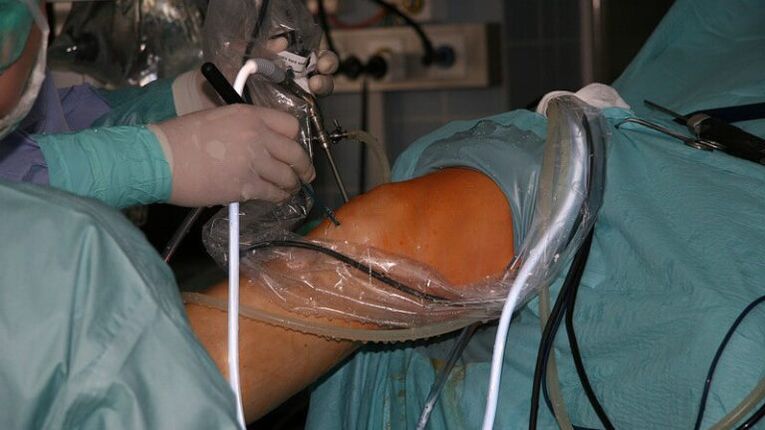
In osteoarthritis, the affected joint is sometimes rinsed with saline. This is most often done, for example, with the knee joint.
By rinsing the bursa, damaged cartilage and tissue fibers are removed, as well as other particles floating in the synovial fluid. In addition, the procedure should alleviate any existing inflammation in the joint.
Reorganization means complex treatment of the joint capsule. Rough cartilage surfaces in the joint are removed with instruments. It also removes areas or tissues that can interfere with joint mobility. Acute pain, at least temporarily, disappears as a result of treatment.
Joint treatment is performed as part of arthroscopy. Surgical instruments are inserted into the joint through very small incisions.
Stimulating cartilage growth
During arthroscopy, small injections of the remaining cartilage surface are made for therapeutic purposes. This should stimulate the cartilage cells to form replacement tissue. However, this new cartilage tissue has a different structure than the original cartilage and does not fully meet the requirements for the joint.
During several years of the disease, in some cases, the cells can be transplanted into the damaged joint.
Correction
Corrective osteotomy repositions the articular bones for a more even distribution of the load on the articular surfaces: part of the pressure is transferred from the osteoarthritis zone to healthy areas of cartilage and bone. In most cases, this type of osteoarthritis treatment also involves improving the functioning of the joint capsule and ligaments to restore joint mobility.
Joint replacement
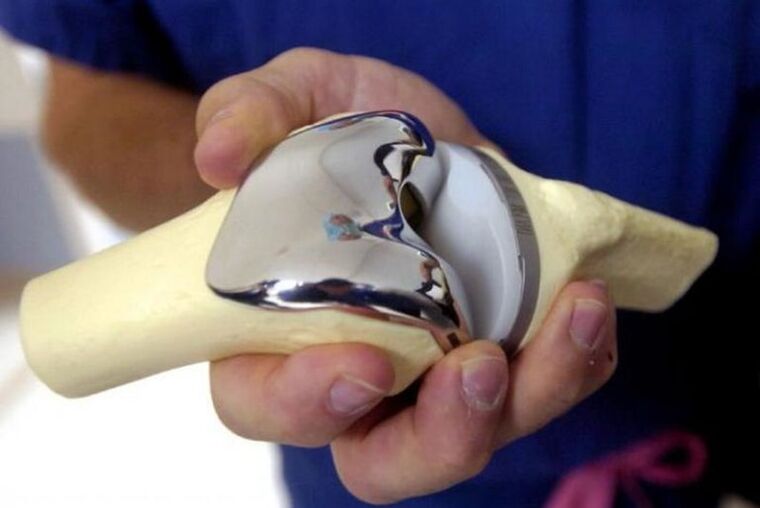
If the pain cannot be relieved by any other treatment for osteoarthritis, joint replacement is possible. This means that the damaged joint (or parts of it) is replaced with an artificial one. Basically, surgery is performed in case of osteoarthritis of the knee or hip joints.
Complex replacement is the last option
Strictly speaking, worn-out joint tissues and joint surfaces are surgically removed and replaced with metal, plastic and ceramic prostheses (alloarthroplasty). There are dentures that replace only parts of the joint, and there are also those that are used to replace the entire joint. They are fixed either on the surface of the bone or with screws. This method of treating osteoarthritis can, if necessary, correct the position of the joint.
After a while, each prosthesis can wear out. The time when this happens depends on various factors: age, gender, clinical picture of osteoarthritis, infections, joint type and type of prosthesis.
Lightweight dentures should be changed more often. Prosthesis wear can be detected in a timely manner by regular radiography.
Arthrodesis
Arthrodesis can help manage osteoarthritis pain. This is the strengthening of the affected joint: it is more stable, but also less mobile. Therefore, arthrodesis is usually performed only on joints where less mobility does not interfere with the patient's daily life. These include the knuckles on the hands and feet, and the small joints in the wrist.
Resection
In this form of osteoarthritis treatment, damaged joint bodies are removed and surgically reconstructed without dentures. However, resection arthroplasty is rarely used today.
This option may be considered for osteoarthritis of the thumb (rhizarthrosis), especially if conservative treatment of osteoarthritis has not been successful. One of the affected metacarpal bones is removed and replaced by the body’s own tendon tissue. The tendons of the long muscle of the thumb or the tendons of the flexor tendon are often used. This form of therapy for rhizarthrosis is not considered a standard method.
Resection arthroplasty is also performed in arthrosis of the big toe or arthrosis between the clavicle and the humerus.
Alternative treatment for osteoarthritis

What helps with osteoarthritis other than orthodox medical procedures? This question is of interest to many patients. They want to support treatment with "natural", simple methods. Although many alternative methods have not been scientifically proven to be effective, they are a good relief for osteoarthritis in some patients. Homeopathy, herbal medicine, magnetic therapy and acupuncture are widely used to relieve arthritis symptoms.
Salts and homeopathy
In many cases, patients with osteoarthritis rely on these two alternatives: salts and homeopathic granules to relieve the symptoms of osteoarthritis. In addition, salt baths and compresses should also prevent osteoarthritis. Proponents say both treatments have no side effects and are therefore suitable for self-medication.
Experts recommend the use of minerals in combination with ointments or cream gels. Homeopathic remedies for osteoarthritis should be discussed with an experienced therapist.
Herbal substances
For centuries, the treatment of osteoarthritis has been based on medicinal plants. These include African devil’s claw, nettle, comfrey, willow, dandelion, cayenne tea and pomegranate. However, the symptoms of osteoarthritis improve if you use herbs for a long time. Your doctor or pharmacist will advise you on the correct use and dosage.
Magnetic field therapy
Magnetic therapy for osteoarthritis is designed to relieve pain, restore joints and improve the quality of life of patients. The magnetic field creates a natural magnetic stone or electric coil.
Medical research has shown that magnetic therapy can be especially helpful for osteoarthritis of the knee. But patients with chronic multi-joint problems (polyarthritis) should also benefit. No side effects have been observed with this alternative treatment for osteoarthritis.
X-ray therapy
X-ray treatment of osteoarthritis is designed to inhibit inflammation and improve blood circulation. Radiation should be performed at regular intervals, and only very small doses of radiation are used.
X-rays are used, for example, in the treatment of rhizarthrosis and in the treatment of Heberden's osteoarthritis.
Acupuncture
Stimulation of certain points on the skin with acupuncture in order to normalize the disturbed processes in the body again. Usually the course of treatment requires several sessions.
The use of acupuncture for osteoarthritis is not widely accepted. However, some patients state that acupuncture can actually help relieve arthritis pain. Especially with the combined wear of knee structures, acupuncture can reduce chronic pain.
Osteoarthritis and diet
The link between arthritis and diet is often debated: can an unhealthy diet contribute to osteoarthritis? Do you need to change your diet because of osteoarthritis?
In general, some foods cannot be said to cause osteoarthritis. However, the type of diet can actually affect its course: it is important how much we eat and how our meals are prepared.
Less calories
As you gain weight, the load on your joints increases, and as a result, they wear out faster. Therefore, overweight people have a higher risk of osteoarthritis.
If osteoarthritis is already present, obesity contributes to combined wear and tear, especially in the knee.
Obesity has a great impact on the joints. Excess weight at a young age is especially critical.
Therefore, the diet for osteoarthritis should be adjusted by counting calories if a person tends to be overweight. A healthy body weight relieves joints, can alleviate discomfort during illness and slow the progression of changes.
Less animal fat

Proper nutrition for osteoarthritis means reducing the intake of meat and other animal products. Reason: In damaged joints, inflammation develops more easily in osteoarthritis. Several metabolic products mediate these inflammatory reactions in the body and are made from arachidonic acid (omega-6 fatty acids). These are mostly animal products.
Therefore, a diet for osteoarthritis should limit the use of arachidonic acid. Instead, you are more likely to consume foods high in omega-3 fatty acids because they inhibit inflammatory reactions. Omega-3 fatty acids are found, for example, in rapeseed and flaxseed oil and in fatty fish such as herring, mackerel and salmon.
Therefore, the following guidelines apply to an appropriate diet for arthritis:
- Reduce consumption of meat and eggs;
- Fish in the diet twice a week (eg salmon, mackerel, herring);
- Use vegetable oils such as canola oil, flaxseed oil, sunflower or olive oil;
- Eat lots of fruits and vegetables;
- Whole grains and legumes are preferred;
- Drink at least 1. 5 liters of water or unsweetened tea a day;
- Calcium from nonfat dairy products to strengthen bones
- Avoid caffeine, alcohol and nicotine.
Such a diet for osteoarthritis cannot replace other therapeutic measures, but it can intelligently supplement them. This means that although diet does not cure osteoarthritis, it has a positive effect on the patient’s condition.
Keep moving!
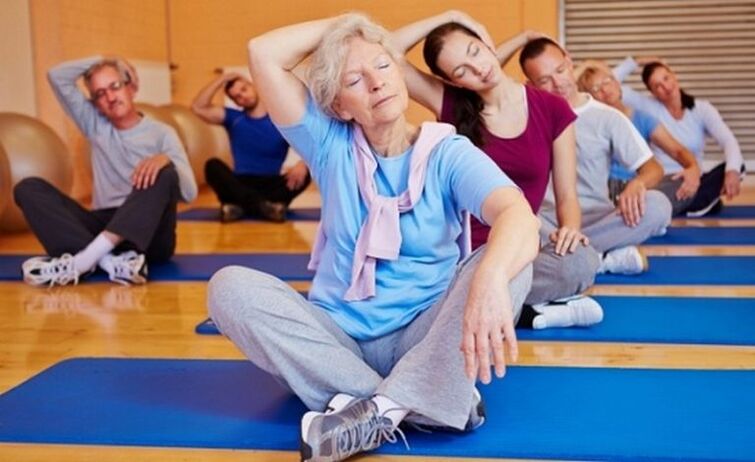
Despite the possible pain, "immobility" in the treatment of osteoarthritis is not a good idea - it actually speeds up the destruction process.
Only during the work of the joint and during the movement of the joint surfaces, a lubricant, the so-called synovial fluid, is formed, which reduces the friction in the joint and provides the cartilage with nutrients.
Ideal movements in which the joint is not overloaded: swimming, cycling, Nordic walking and gymnastics.

























